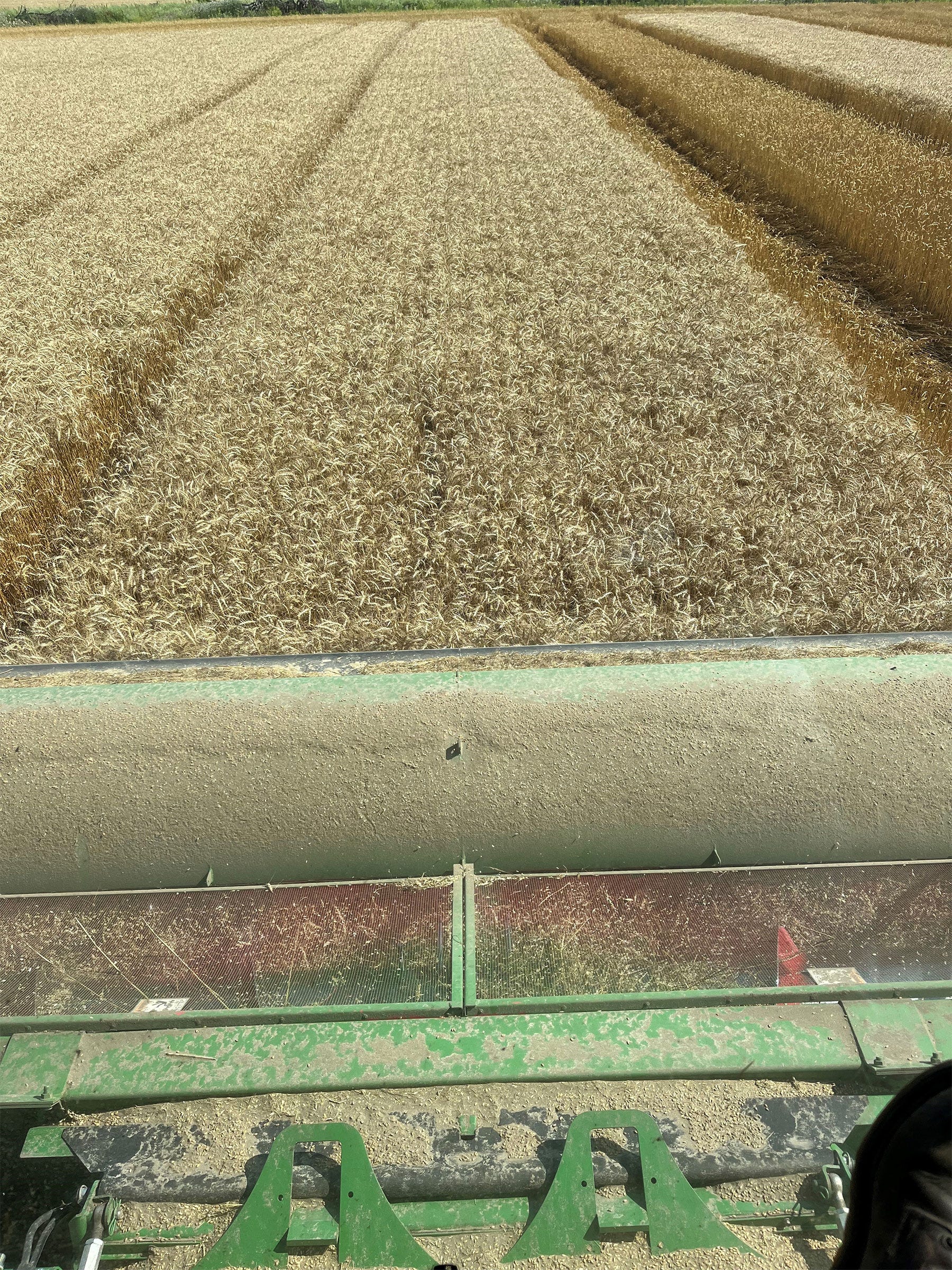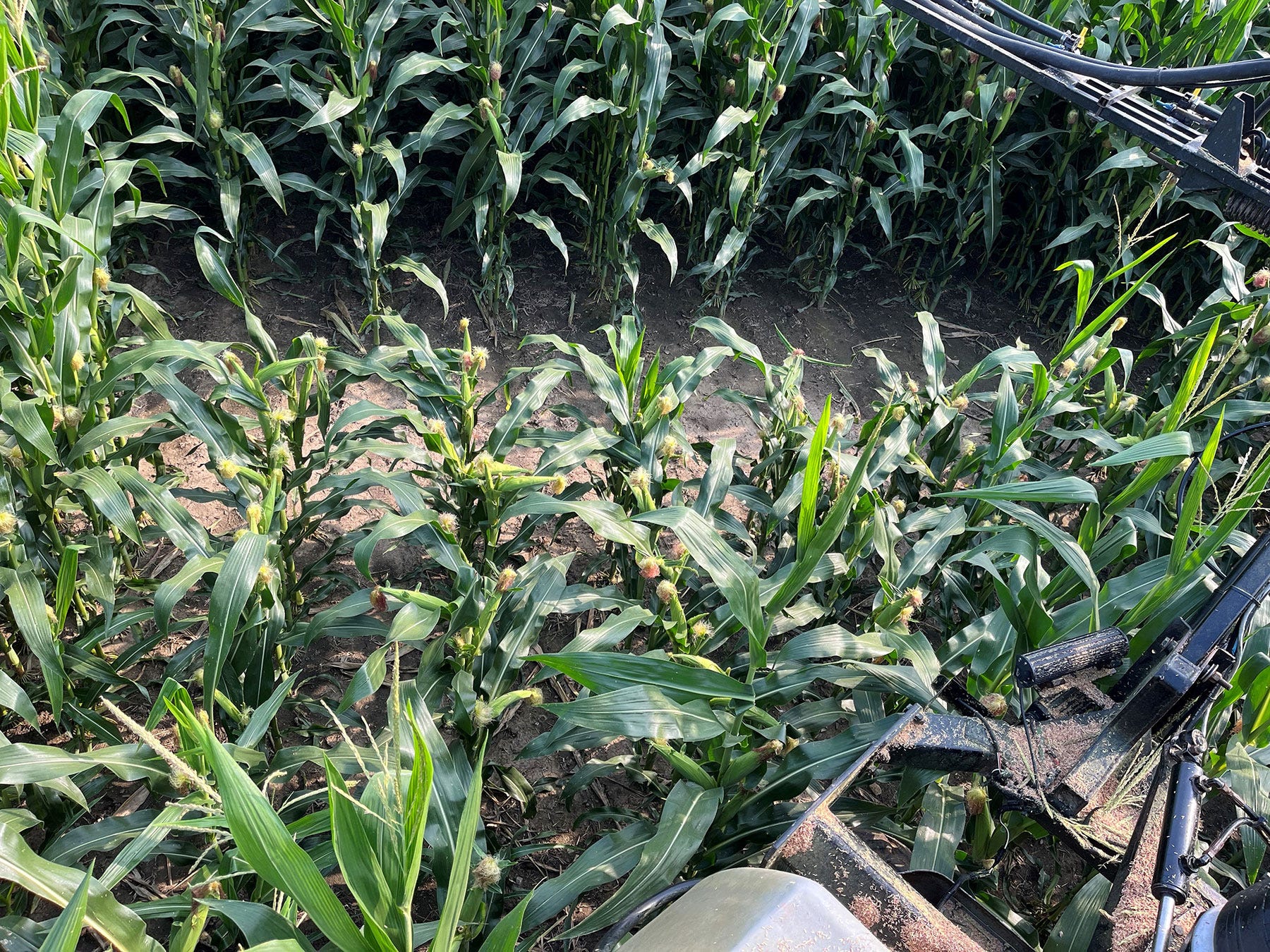
In early May when cold delayed planting, Brad Kamprath said the best part of the 2023 growing season was that it was “just beginning.” Now into mid-August, he’s following 4-H Fair Week with a family vacation, and the best part of this year’s season is “it’s almost done.”
Wheat is off, and corn and soybeans are finishing out with great optimism. With his father, Richard, they are farming just over 1,000 acres of corn, soybeans, wheat and hay just west of Monroe, Mich., in Ida.
Despite some parching while wheat was flowering, the crop fared much better than his predictions of a 30% yield loss. His neighbors are also pleasantly surprised. Harvest started July 10, and Kamprath reports wheat averaged about 100 bushels per acre.
“When I look back at it now, we had a perfect growing season from the time we planted up until that dry spell, and that really carried it,” Kamprath says. “It was better off than I thought to begin with, and later rains helped finish filling.”

WHEAT HARVEST: After a dry spell at flowering, Brad Kamprath expected about a 30% reduction in yield. To his surprise, the crop did much better than predicted, averaging about 100 bushels per acre.
Despite the low threat for disease, Kamprath decided to spray his 270 wheat acres, and after comparing it to an untreated test strip, he says it was worth the $30 per acre of product and his time and resources to spray it. “I got close to a $50 return, depending on the market,” he says. “It would have been more like $80 an acre back when the war started in Ukraine.”
He’s sold some of his wheat and has some stored under a price-later agreement at the elevator.
The fungicide application also helped with straw quality, says Kamprath, who has expanded that business over the past 19 years from 1,500 quarter bales to 12,000, all selling into the fall and Halloween markets.
“They are all sold from Labor Day until about the second week of October,” he says. “It’s our niche.”

DEER DAMAGE: Brad Kamprath says deer damage seems up from previous years. Here, deer chomped down a square area of corn.
Before September rolls in, Kamprath says he’s going to till the wheat stubble and apply lime and fertilizer, and for the first time, plant a cover crop — a mix of oats, radishes and soybeans.
“Oats help keep the topsoil loose, radish roots go deep to break up the ground and soybeans provide nitrogen nodules,” he says. “I’m not going to lie, I am a little nervous about cover crops, but I’m really hoping it will help preserve water in the spring when I plant corn.”
That decision is also based on timing, as by fitting the ground and getting it ready now, it will allow him to quickly stale-till plant in the spring. “I bought a different corn planter, which I think will handle that residue better,” he says.
Corn and soybean update
Looking at his corn and soybeans stands, he’s predicting a healthy 200 bushels per acre of corn and maybe 45 bpa for soybeans, which have been soggy after being recently deluged with 4 inches of rain in three weeks.
At tassel the first part of August, Kamprath sprayed Delaro Complete on about three-quarters of his 380 corn acres. “I didn’t see any tar spot when I was scouting, but it has been confirmed in Monroe County about three weeks ago,” he says. “It’s been hot and humid, and I'm not taking the chance.”
His corn has great height. “If yield were determined by height, I’d say we’re going to have a bumper crop. But we know that’s not the case; we’ll have to wait and see.”
Deer damage, although not excessive, seems to be more than most years. “There’s one area where it looks like the deer ate the tops off from corn in a perfect square,” he says. “It was strange.”

TEAMWORK: Brad Kamprath, at this point, says predictions and expectations of crop yields depend on the weather. To help handle the stress, he says, “It helps to have a supportive wife.” He’s pictured here with wife, Tammi.
To tip his toes into no-till, Kamprath committed a field of 16 acres to continuous no-till five years ago.
“Each year there was a little drag on yield compared to conventionally tilled corn,” he says. “This year, when I went across to spray, I noticed it’s a lot more uneven than other fields, and it just doesn’t look as good,” he says. “I don’t expect dramatic yield decreases, but emergence was a problem for us this year.”
Fieldwork is winding down after spot spraying soybeans for weed control. With some hesitation after being on the other side, Kamprath says his ground is saturated. “We had three days where we got 2 inches,” he says. “It’s a little too much for some of our soybeans — we’re going to lose our holes.”
But, as it stands right now, Kamprath is “feeling pretty good about the crops. It should be decent, and we’re getting close, but yet we’ve got a long way to go.”
About the Author(s)
You May Also Like






